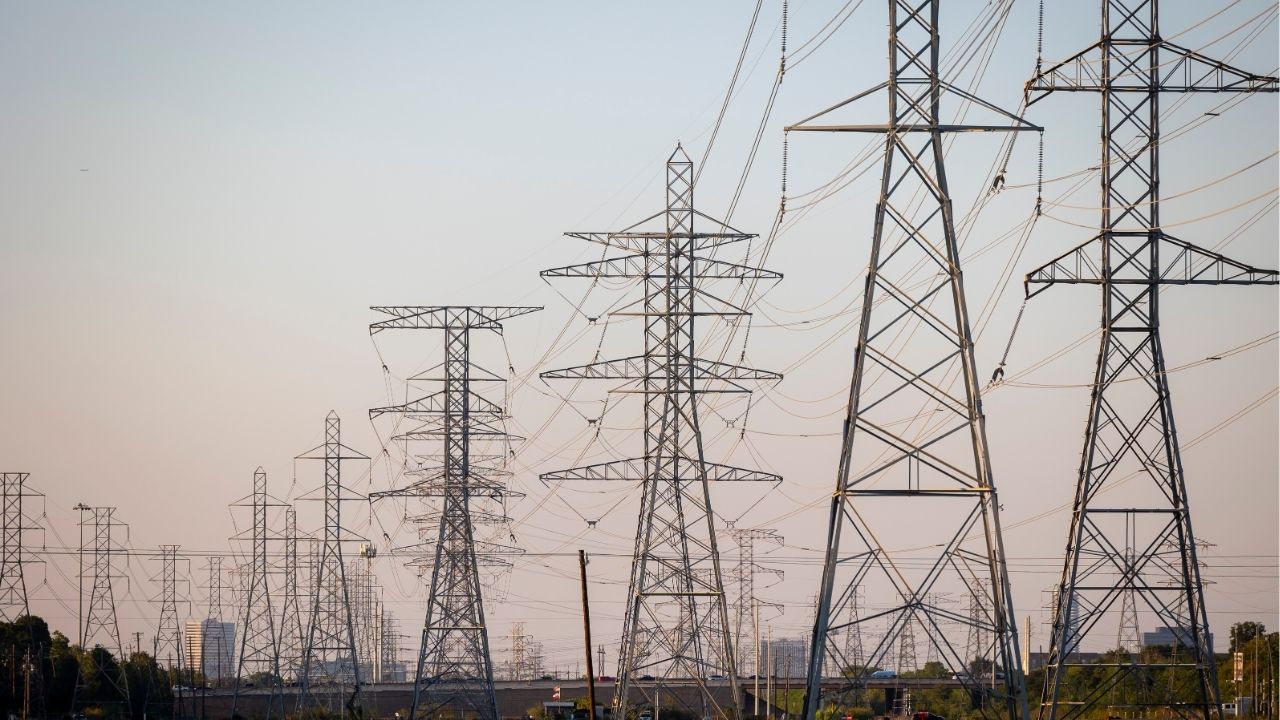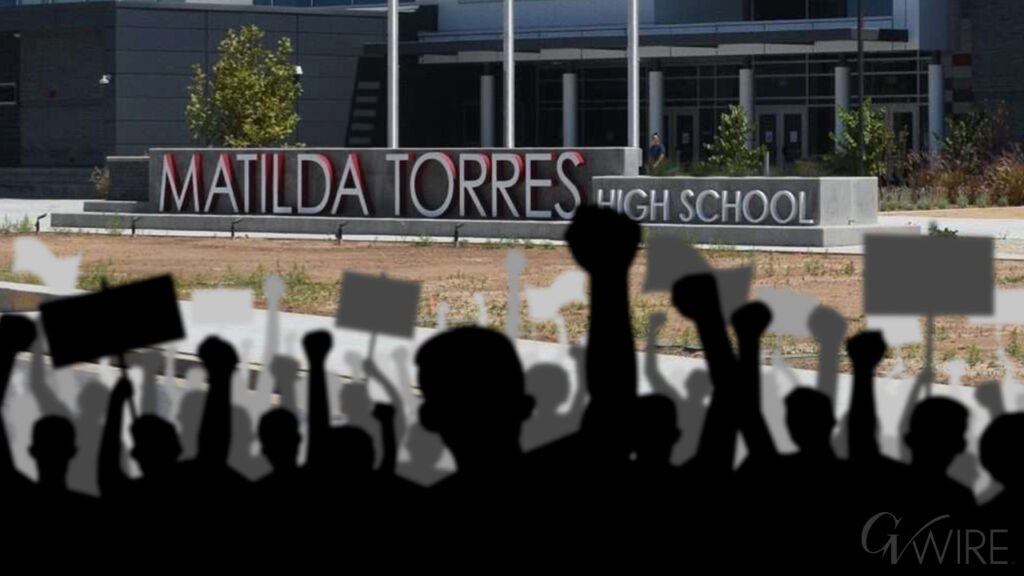Power lines south of downtown Houston, Sept. 20, 2023. Millions of Americans have watched with dismay as their electricity bills have spiraled upward over the past few years. But not all states are struggling equally, and the reasons why are diverse. (Annie Mulligan/The New York Times)

- Electricity prices are rising faster than inflation in half the country, sparking voter anger and political clashes nationwide.
- A Lawrence Berkeley study finds “poles and wires,” not renewables, are driving most electricity cost increases across states.
- Data centers, natural gas spikes, and aging infrastructure are adding strain to America’s power grid and household energy bills.
Share
|
Getting your Trinity Audio player ready...
|
Millions of Americans have watched with dismay as their electricity bills have spiraled upward over the past few years. The rising price of power is squeezing households and businesses, and voter fury over higher costs is jolting elections in New Jersey, Virginia and Georgia.
President Donald Trump, who as a candidate promised to cut electric bills in half within 18 months, has blamed wind and solar power for soaring costs. Democrats say the problem is Trump’s throttling of renewable energy, while others point to the rapid spread of energy-hungry data centers.
But the factors driving electricity rates are often more complicated and depend on where you live, according to a comprehensive new study by researchers at Lawrence Berkeley National Laboratory.
Not all states are suffering equally. Over the past six years, the average retail price of electricity has risen faster than inflation in 26 states. But rates have stayed flat or even declined in the rest of the country in real terms (that is, they’ve grown more slowly than overall inflation).
Many states that have seen a major expansion of wind and solar power, like Nevada or North Dakota, have seen prices stay flat or decline, although there are some important exceptions to this rule. California is a leader in renewable energy but has seen some of the largest electricity rate increases in the country, in part because devastating wildfires have imposed steep costs on utilities, which often get passed onto households. In the Northeast, states have struggled with high natural gas prices.
“There are so many different factors that can drive up electricity prices, depending on where you live,” said Ryan Hledik, a principal at the Brattle Group, a research firm based in Boston that contributed to the study. “It’s a more nuanced story than what you often see in the headlines.”
Inflation Is Part of the Story
The simplest factor behind surging power prices is inflation. Since 2021, as a result of post-pandemic disruptions, virtually everything has gotten significantly more expensive: food, cars, lumber, equipment, labor. For the most part, the increase in electricity rates nationwide has been in line with overall inflation, although there has been a noticeable acceleration this year.
National averages can obscure a lot, though, and many states have seen electricity rates rise even faster than inflation, suggesting that there is more to the story.
In California, average retail prices have risen by a staggering 34% since 2019 — even after adjusting for inflation. In New Jersey, prices jumped 11% in the past year. In states like Connecticut, Maryland, Massachusetts, New York, Pennsylvania and West Virginia, prices are rising significantly faster than inflation.
‘It’s Really Poles and Wires’
The two biggest factors that influence power prices are the cost of generating electricity at a power plant and then delivering those electrons to homes and business through large regional power lines (known as transmission) and the smaller wires snaking through cities (known as distribution).
“When you look at what’s driving electricity bills, it’s really poles and wires,” said Charles Hua, the founder of PowerLines, a nonprofit organization focused on modernizing utility regulations to cut power bills.
Since 2005, the cost of generating power has declined significantly, partly because the fracking boom has made it much cheaper to extract and burn natural gas, the nation’s largest source of electricity.
But over that same period, utilities have nearly tripled the amount they spend annually on the network of poles, wires, substations and transformers that deliver power to customers. Large portions of the electric grid are nearing the end of their 50-year life spans and need replacing. Utilities are also hardening lines and equipment to deal with storms, fires and heat waves, particularly as climate change fuels bigger weather disasters.
Various types of grid equipment — such as transformers — have been in short supply globally and have gotten more expensive. Some critics have accused utilities of overspending on power lines, since they can recoup the costs from customers and earn a guaranteed return, although this can be difficult to quantify.
Renewables Aren’t a Big Factor (Mostly)
In recent years, the United States has seen swift growth in wind and solar power, which together produce 17% of the nation’s electricity. Energy Secretary Chris Wright has blamed renewable energy for increasing electricity costs because it can’t run at all hours and requires fossil fuel backup.
Yet the Lawrence Berkeley study found a more nuanced story. In regions that have great wind and solar resources — such as the gusty Great Plains or sunny Southwest — renewable energy has boomed, and retail electricity prices have either flattened or fallen, after adjusting for inflation. Many of these states, like Iowa or South Dakota, don’t require anyone to use more renewable power; companies build it because it is often the cheapest option to put additional electrons onto the grid.
But there are exceptions: Several states that aren’t especially windy and sunny have required utilities to buy more electricity from large-scale wind or solar farms, such as Maine, Maryland, Massachusetts and New York. These requirements, which are often adopted to lower greenhouse gas emissions, can add a noticeable surcharge to bills.
Many states — including California, Maine and Massachusetts — have also offered incentives for homeowners to install rooftop solar panels. These policies can raise prices for other customers, because solar households pay less to the utility but still rely on it for backup power. That shifts the cost of maintaining the grid to other households, utilities say. (Solar proponents disagree, saying that this argument ignores many benefits of rooftop panels, such as avoided transmission costs.)
Rooftop solar policies accounted for roughly one-quarter of the increase in retail electricity prices in Maine and California since 2019, the Lawrence Berkeley study concluded. More recently, California and some other states have begun paring back their home solar incentives.
Gas Spikes and Data Centers Also Matter
Other states have their own stories.
Electricity is expensive in the Northeast because those states rely heavily on imported natural gas and there are a limited number of pipelines into the region, making the fuel costly. (In recent years, New York has blocked new pipelines and closed a nuclear power plant, which deepened the state’s reliance on gas.)
That left the Northeast vulnerable when gas prices skyrocketed in 2022, amid Russia’s invasion of Ukraine. In Maine and Massachusetts, retail prices shot up by more than one-third as a result of these spikes, which have only lately subsided.
In recent months, many communities have become alarmed by the expansion of massive data centers for artificial intelligence, with some critics warning that these power-hungry facilities will increase electricity costs.
And yet in Virginia, home to one of the world’s largest concentrations of data centers, electricity prices have mostly stayed flat over the past six years, adjusting for inflation. If anything, those data centers may have helped suppress prices by allowing utilities to spread the fixed costs of maintaining the grid among a larger set of customers, the Lawrence Berkeley study found.
But the effects of a rapid data center expansion won’t always be benign, experts cautioned. A lot depends on whether power companies can keep up with the enormous energy needs of new data centers, and whether tech companies or households bear the cost of any needed grid upgrades.
More ominously, wholesale electric capacity prices have been skyrocketing this year in PJM Interconnection, the large regional grid that supplies Maryland, New Jersey and Pennsylvania and Virginia. Some analyses have blamed those spikes on new data center demand, which are coming as older coal and nuclear plants are retiring and the grid operator has been slow to connect new renewable and gas plants to replace them.
“Part of the problem is that you can often build new data centers faster than you can build new power plants to supply them,” said Geoffrey Blanford, a principal technical executive at the Electric Power Research Institute, a nonprofit group that conducts research for the nation’s electric utilities. “And that bottleneck can really drive up costs in the short term.”
Will Prices Keep Rising?
The average price of electricity has been rising faster than inflation this year, and government forecasters expect that will continue next year, especially since natural gas prices are starting to climb upward. Politicians are often struggling for answers.
Trump administration officials say the solution is to drill more natural gas and build more pipelines to get that gas where it’s needed.
Yet the administration is also trying to make it more difficult and expensive to build new wind and solar projects, while canceling federal grants for grid upgrades aimed at lowering costs. While it will take time for the full impact of those restrictions to be felt, experts say, they are expected to put upward pressure on electricity prices later this decade.
Some states are exploring ways to blunt price shocks by requiring tech companies to absorb more of the cost of adding new data centers or encouraging those data centers to operate more flexibly so that they limit the strain on the grid. Others are considering technological options that could cut costs, such as deploying more batteries.
The problem is pressing. More than 24% of households were unable to pay their energy bills in full in 2024, according to Census Bureau data, up from 20% in 2021.
“It’s a perfect storm of misery for low- and middle-income households,” said Mark Wolfe, executive director of the National Energy Assistance Directors Association.
—
This article originally appeared in The New York Times.
By Brad Plumer, Harry Stevens and Rebecca F. Elliott/Annie Mulligan
c. 2025 The New York Times Company



















